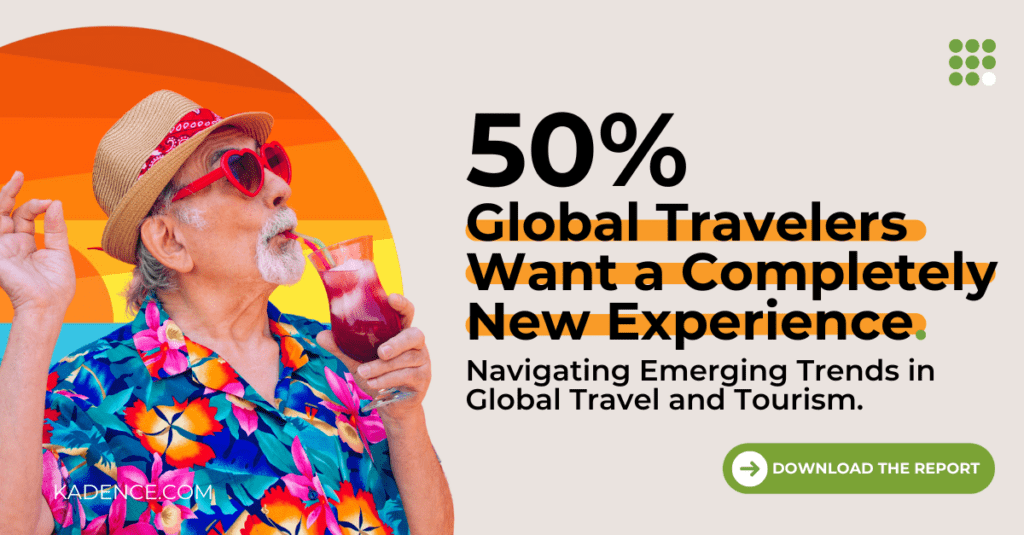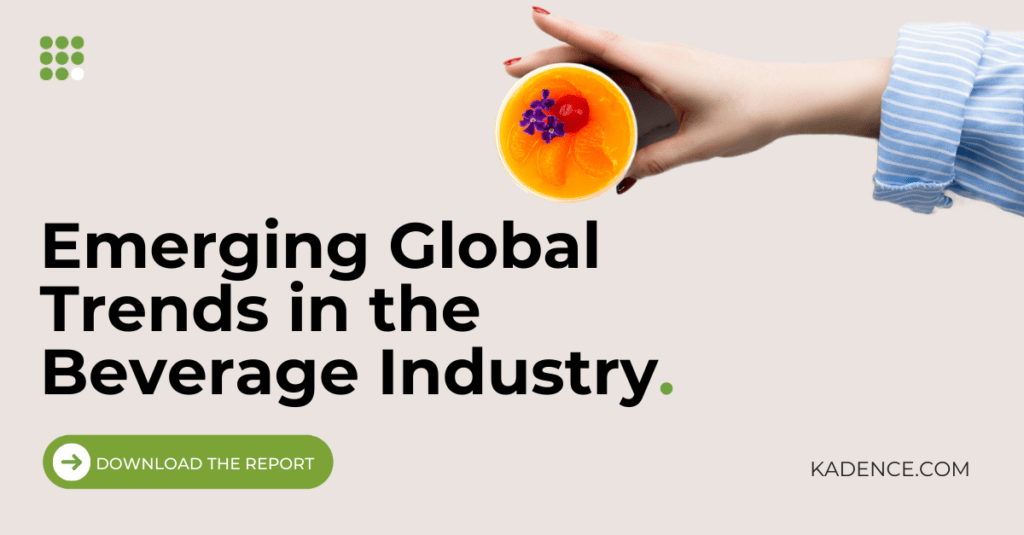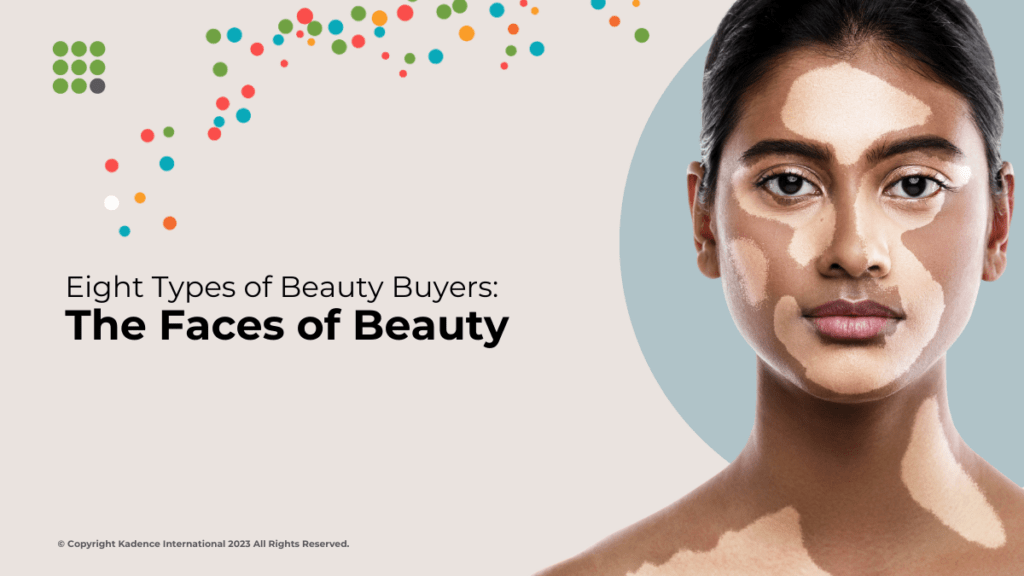Customer loyalty is critical in today’s fiercely competitive market. This is because acquiring a new customer can cost five times more than retaining an existing one, according to the Harvard Business Review. But the dynamics of loyalty are not etched in stone; they are fluid, influenced by an ever-evolving market and ever-changing customer preferences. Herein lies the significance of market insights, the compass that helps navigate the choppy waters of consumer choices and decisions.
U.S. companies confront a concerning annual deficit of $1.6 trillion, a statistic underscored by Accenture, due to customers gravitating towards rival brands. This underscores the imperative of retaining existing clientele. With today’s digital landscape allowing consumers to easily be swayed by competitors, grasping the subtleties of customer loyalty becomes paramount.
Market insights dive deep to extract information and trends about customer behaviour. These insights range from understanding the factors driving customer decisions to predicting future trends based on current data. They are pivotal in crafting strategies that don’t just resonate with the consumer but often precede the consumer’s own understanding of their needs and wants. It’s about being one step ahead, knowing your customer’s next move even before they do.
Today, market insights are garnered from many sources —social media sentiments, online purchase patterns, product reviews, and even customer service interactions. This data, when processed and analysed, holds the key to deciphering what makes customers stick — or stray.
Are they price-sensitive or value-driven? Do they crave innovation or dependability? These are the kinds of questions market insights can answer, shaping the way brands communicate with, sell to, and ultimately retain their customers.
But, the real magic happens when these insights are acted upon and translated into action — whether through personalised marketing, tailored product offerings, or exemplary after-sales service. In doing so, brands can leap ahead, forging enduring customer relationships.
Loyalty is not won in a day. It is earned over time through consistent experiences that resonate with the customer personally. Market insights ensure these experiences are not based on guesswork but on a deep, insightful understanding of what the customer desires, both today and tomorrow. In the quest for customer loyalty, they are the most potent weapon a brand can wield.
The New Dimensions of Customer Loyalty
There is a customer loyalty paradox in the digital age. On one hand, technology has brought customers closer to brands than ever before. Conversely, it allows them to move from one brand to another quickly. The touchpoints have exploded in number and nature, ranging from social media platforms, e-commerce websites, dedicated apps, and more, creating a complex web of interactions a brand needs to master. Customer loyalty, once a simple allegiance to a particular brand, often based on tradition or lack of options, has become a challenge, adding complexity to retention strategies.
According to a report by Salesforce, 76% of consumers say they’re more likely to change brands than five years ago. This statistic indicates a shift in consumer behaviour. Loyalty is not just about quality or service; it’s about customer experiences, personalisation, values, and the brand’s persona.
Adding another layer is the role of data. The IBM Institute for Business Value highlights that 81% of consumers are willing to share basic personal information in exchange for a more personalised, trust-building experience. Herein lies an opportunity dressed as a challenge: brands need to harness this data intelligently to craft tailored experiences so the customer feels understood.
Social media, too, wields a double-edged sword. While platforms are powerful tools for engagement and personalisation, they also allow consumers to share their grievances. A study from Sprout Social indicates that 49% of consumers would unfollow brands due to poor quality of service, making every tweet, every post, and every comment a moment of truth for brands.
This makes one thing quite clear: understanding and retaining customers is akin to an art form. It requires a balance between gathering insights and acting upon them, between speaking and listening, and between promising and delivering.
The loyalty of yesteryear meant repeat purchases. Today’s loyalty thrives on engagement, experiences, and trust. Market insights help a brand paint a masterpiece that’s not just captivating for the customer but also keeps them coming back, time and again. This is when, despite the countless options at their fingertips, customers repeatedly choose the familiar comfort of a brand they trust.
Market Research as the Beacon of Customer Understanding
Market research takes centre stage in a brand’s business strategic plan, building the path to deep customer understanding and loyalty. It helps peel back layers of surface interactions to unveil the core drivers of customer behaviour.
Market research observes the unsaid, sees the unseen, and clarifies ambiguity. It aims to dive into the ‘why’ behind every ‘what’ associated with consumer decision-making.
Market research employs an array of tools, each with its unique strength. Surveys, the most well-known of these tools, offer quantitative strength, presenting complex data that can pinpoint trends, identify market segments, and measure customer satisfaction. They are the pulse checks that, when crafted with care, can provide robust numerical data essential for strategic decisions.
In contrast, focus groups are the meeting grounds of empathy, providing qualitative richness numbers alone cannot convey. These discussions echo customer sentiment, reflecting authentic reactions, beliefs, and attitudes toward a product, service, or concept. They unravel the story behind each preference and the emotion linked to each choice, providing context that is invaluable and intricate.
Emerging robustly on the scene is data analytics, sifting through vast volumes of data. From tracking online consumer behaviour and engagement metrics to analyzing patterns in purchases and product reviews, data analytics is like the lens of a microscope, bringing the most minor details into clear focus. It predicts, personalises, and paves the way for customer experiences attuned to individual preferences.
Social media listening and analysis, too, has surged forward as a phoenix of insight, turning every like, share, comment, and tweet into a story revealing public opinion and trends.
Each method, individually or in combination, reveals consumer behaviours and attitudes and provides a window into customer loyalty.
Market research empowers brands to craft strategies according to their customers’ needs, desires, and expectations. In the quest to retain customers, market research is, therefore, indispensable.
Predictive Analytics and Consumer Behavior
Predictive analytics is the discipline where data meets foresight, analyzing current and historical facts to predict future events.
Predictive analytics operates on the cusp of certainty and probability. It assesses patterns, detects trends, and recognises relationships in a complex mix of variables. When these capabilities are applied to consumer behaviour, brands can almost discern even the whispers of decision-making processes among their customers. They can predict who will buy what, when, through which channel, and possibly even why. This foresight is invaluable where timely nudges can make the difference between a cart abandoned and a checkout completed.
Take the case of Spotify, a streaming service that has turned predictive analytics into user satisfaction. By analyzing data points like listening habits, song likes and skips, playlist additions, and more, Spotify curates incredibly personalised recommendations, creating a unique listening experience for each user. This becomes a bond of trust, a silent assurance that Spotify ‘knows’ your musical taste. The result? A loyal, engaged user base that sees no reason to switch to another service because the personalisation just ‘gets’ them.
In another instance, American Express has employed predictive analytics to forecast potential churn. By analyzing more than a hundred variables, the company could identify accounts at the highest risk of closing within the next two months. Such foresight allowed American Express to initiate targeted retention strategies, turning a prophecy of loss into a story of loyalty regained.
Retail giant Amazon has also masterfully employed predictive analytics not just to suggest products but to anticipate consumer demand. It analyses customer searches, purchases, and even items lingering in wish lists to forecast what they will likely seek next. This foresight informs inventory decisions, personalised promotions, and even the products highlighted on the homepage. For the consumer, it feels like Amazon is always one step ahead, ready with precisely what they need, sometimes before they fully realise they need it.
These examples highlight the power of predictive analytics as a strategic asset. It’s a testament to the fact that understanding your consumer is not just about observing who they are but foreseeing who they could be —their preferences, decisions, and loyalties. When brands pair predictive analytics with nuanced market insights, they witness consumer behaviour and, most importantly, stay ahead of it. This foresight from data analytics can retain customers and keep them coming back for more.
Unearthing the Cornerstones of Customer Loyalty
Customer loyalty is an intricate weave of experiences and perceptions, a series of continual affirmations that persuade the customer, time and again, to choose a particular brand over countless others. Understanding the pillars that uphold this loyalty is, therefore, foundational.
First among equals is product quality. A product that stands the test of time, usage, and expectation is the silent ambassador of a brand’s commitment to its customers. But how do we gauge quality? Market insights play a pivotal role here, collecting customer feedback, product reviews, and quality ratings to provide a clear picture of where the product stands in the eyes of those who matter the most — the customers.
Customer service, another critical pillar, is the human touchpoint of the brand. It reflects the brand’s empathy, responsiveness, and willingness to go the extra mile. Surveys and direct customer feedback are traditional yet powerful tools that help gauge the effectiveness of customer service. In today’s digital communication, social media analysis provides raw, unfiltered, and immediate insights into customer service perceptions.
Closely linked to customer loyalty is brand trust, an intangible yet palpable assurance that the brand will deliver on its promises. It’s built with consistent performance, authentic communication, and ethical behaviour. Market research methods like brand health tracking and online reviews analysis are vital in understanding the levels of trust consumers have in a brand and why.
Personalisation has emerged as a new bastion of loyalty. It’s no longer about treating a customer well but about treating them as an individual. Data analytics guides brands through the mountains of data to glean insights into customer preferences, habits, and behaviours, thus enabling experiences tailored to individual tastes.
The value proposition, the core of what the brand offers, is a blend of quality, price, brand values, and the uniqueness that sets a brand apart. Competitive analysis, along with SWOT (Strengths, Weaknesses, Opportunities, Threats) analysis, can help a brand position its value proposition in a way that resonates with consumers, catering to their explicit needs and implicit desires.
These factors do not stand alone; they either captivate the customer or drive them away. Through continuous measurement, understanding, and nurturing of these determinants, brands earn loyalty, turning interactions into transactions.
Insight-Driven Strategies for Marketing Leaders
For Vice Presidents of Marketing standing at the confluence of data streams and business strategies, insights gleaned from market research act like a compass for navigating consumer preferences. These insights, however, demand more than acknowledgement — they require action. Transforming these golden nuggets of understanding into actionable strategies turns the ordinary into extraordinary brand experiences.
First on the strategist’s board is the personalised marketing campaign — crafted with individual customer preferences, history, and behaviour. However, this personalisation transcends the superficial layer of addressing the customer by name. It’s about curated emails considering past purchases— web pages that adapt to show preferred products or even special offers on birthdays and anniversaries.
Data analytics, with its treasure trove of customer data, enables marketers to segment their audience not just demographically but psychographically and behaviorally.
Next is loyalty programs, which are no longer just about points and discounts but about building communities by offering exclusive experiences and recognising loyalty in ways that matter to the consumer. Market insights help uncover what motivates and engages a brand’s unique customer base. Is it a sneak peek at an upcoming product, an exclusive webinar with an industry expert, or a reward for consistent engagement on social media? Understanding what makes the audience tick can transform a loyalty program from a card in the wallet to an ongoing engagement with the brand.
Feedback loops, meanwhile, close the gap between customer experience and product development. They’re not just about collecting feedback but about showcasing its impact. When a customer sees their suggestion manifest as a tangible change, that’s a story they share. Here, market research tools like real-time feedback forms, social listening, and sentiment analysis can offer immediate insights into customer opinions. At the same time, ongoing community forums can provide a space for continuous dialogue.
With the rise in social responsibility, purpose-driven marketing also makes a strategic appearance. Consumers align with brands that stand for something, be it sustainability, social justice, or community support. By using market insights to understand the causes close to their consumers’ hearts, brands can integrate these values into their brand story authentically.
Lastly, an omnichannel presence has evolved from a nice-to-have to a necessity. Consumers expect seamless transitions from online to offline platforms, from mobile apps to physical stores, and from social media to websites. Data analytics provide a holistic view of the customer journey, identifying preferred channels and touchpoints ensuring consistency and coherence in every interaction.
These strategies, driven by insights and a profound understanding of consumer desires, deepen emotional connection with the customer. For a VP of Marketing they represent the move from transactional relationships to meaningful engagement, crafting not just a consumer base but a community of brand advocates.
Navigating Challenges in the Journey to Market Insights
Market insights are dotted with challenges, from data deluges to interpretational ambiguities, from insight silos to action lags. Recognising these turbulent waters is the first step in charting the right course.
Today, every click, scroll, and swipe leaves a digital breadcrumb, creating a trail so vast and winding that finding meaningful insights can feel like searching for a lighthouse in a storm. The solution lies in smart data management. Implementing advanced data analytics platforms with AI capabilities can help sift through the noise, identifying patterns and insights that matter. Furthermore, setting clear KPIs (Key Performance Indicators) can guide data collection with purpose, ensuring what’s gathered is relevant, actionable, and manageable.
Then comes the challenge of interpretation. Data doesn’t always speak the language of clarity, and market insights can sometimes be foggy. This is where the power of multidisciplinary teams comes into focus. Encouraging collaboration between data scientists, market analysts, and customer-facing teams can lead to a more holistic understanding of the numbers and trends. Additionally, continuous learning programs and workshops in data literacy for all team members can demystify data, turning it from a challenge into an ally.
Another significant hurdle is insight silos. Too often, insights gleaned are confined to the department that sought them, hidden away from other departments. Creating centralised insight repositories accessible to all relevant teams encourages a culture of shared understanding and cohesive strategy. Regular cross-departmental insight-sharing sessions can also ensure everyone is aligned, informed, and driven by a unified understanding of the customer.
Moreover, the leap from insight to action is often lengthened by bureaucratic delays and decision paralysis. Streamlining the decision-making process is key here. Establishing pre-set action protocols based on specific insights can ensure swift, decisive movement. Agile project management methodologies can also impart the flexibility and velocity needed to act on insights with the urgency they often demand.
Market insights are fraught with challenges, both foreseen and unexpected. Yet, with the right crew, tools, and navigational skills, these challenges are the milestones in a journey toward uncharted territories.
Starbucks’ Mastery in Brewing Customer Loyalty with Market Insights
Starbucks has become emblematic of how consumer understanding can be transformed into brand loyalty. Starbucks’ loyalty program, Starbucks Rewards, is a masterclass in bringing together various customer data elements to personalise experiences. But this did not happen overnight. When the company faced a stagnation in membership growth, it analysed customer feedback and purchasing data. The brand discovered a desire for more flexibility in point redemption and tailored rewards. Acting on these insights, in 2019, Starbucks revamped its program to allow for more customisation in how points, or “stars,” could be used and introduced a tiered rewards system. The result was a surge in membership by 14% in that year alone, as reported in their Q2 2019 earnings call.
The brand’s mastery of market insights doesn’t end with its loyalty program. Take, for instance, its seasonal offerings. Pumpkin Spice Latte, also known as PSL, has its own cult following, but its annual return isn’t arbitrary. Starbucks leans on historical sales data, social media sentiment analysis, and market trends to pinpoint the optimal time to bring back this seasonal favourite. The purposeful suspense and well-timed re-entry keep the brand at the forefront of consumer consciousness, driving sales and emotional engagement.
Starbucks also understands that convenience is non-negotiable for today’s consumers. Analysing data on purchasing patterns and recognising the increasing need for speed and ease, the company invested robustly in its mobile app. They focused on streamlining mobile orders and payment, even integrating it with their loyalty program, reinforcing its utility and stickiness. The proof is in the numbers, as digital orders reportedly accounted for approximately a quarter of total transactions in U.S. company-operated stores as of 2020, according to Starbucks.
Starbucks’ journey highlights a crucial learning: customer loyalty isn’t a treasure that, once found, remains secure. It’s a journey that commands perseverance, innovation, and, most importantly, an ear to the ground. By keeping the lines of listening open, be it through direct feedback, surveys, or data analytics, and being unafraid to pivot based on these insights, Starbucks continues to brew loyalty in a saturated market.
The Interwoven Future of Customer Loyalty and Market Research
The symbiotic relationship between customer loyalty and market research has massively changed.
One of the most striking developments in the field is the burgeoning role of Artificial Intelligence (AI) and Machine Learning (ML). These technologies are on course to transcend the traditional, reactive analysis of consumer behaviour, propelling us into predictive and prescriptive analytics. Imagine a scenario where AI can accurately forecast a consumer’s loyalty potential from their initial interaction with a brand, enabling businesses to tailor their engagement strategies from the get-go. Or consider AI’s ability to prescribe precise actions that can enhance individual customer experiences, not just based on historical data but also by considering real-time emotional responses captured through advanced sentiment analysis tools.
Another transformative trend is the emergence of the Internet of Behaviours (IoB), an extension of the Internet of Things (IoT). The IoB converges digital and physical worlds, capturing and utilising data from various sources — from internet-enabled devices to facial recognition systems. In customer loyalty, this could mean harnessing data from a consumer’s smart fridge to their fitness tracker, painting a comprehensive portrait of their lifestyle and preferences. This holistic view will allow brands to foster a deeper, more authentic connection with their consumers by catering to their explicit needs and unexpressed desires.
Privacy, however, will take centre stage. With increased data-capturing capabilities comes the immense responsibility of safeguarding privacy. The future will witness a more pronounced emphasis on ethical data practices, with transparency and consent being paramount. Brands must delicately balance personalisation and privacy, possibly leveraging blockchain technology to create secure, decentralised, and customer-controlled data repositories. This shift will become a cornerstone of customer trust and, consequently, loyalty.
We’ll also see a significant shift toward empathetic marketing. As society grapples with widespread change and challenges, brands must demonstrate empathy and genuine concern, requiring nuanced understanding and insights. Market research will increasingly employ neuroscientific techniques, like eye-tracking and biometric sensors, to gauge emotional responses and unconscious cues, adding a richer, more human dimension to data.
As we progress, one principle remains strong: customer loyalty hinges on experiences —not transactions, relationships —not sales pitches. Market research will see what consumer worlds consist of, to a portal that transports brands into the hearts and minds of their customers.
Harnessing Market Insights to Anchor Customer Loyalty
In today’s highly competitive market, understanding and responding to customer needs is crucial for creating and maintaining customer loyalty. Achieving this loyalty requires converting insights into concrete strategies and actions that provide real value to customers. This process is not a one-time effort but an ongoing cycle of understanding, adapting, and improving. The most successful brands will see this as a core component of their business strategy, keeping the customer at the centre of everything they do.
It’s time to invest in market research and elevate your customer loyalty strategy. Contact Kadence today to gain the actionable insights your brand needs to thrive. Your next step starts with understanding your customers better, and Kadence is here to light that path.
Stay ahead
Get regular insights
Keep up to date with the latest insights from our research as well as all our company news in our free monthly newsletter.
![]()














 Senior Marketing Executive
Senior Marketing Executive Sales & Marketing
Sales & Marketing General Manager PR -Internal Communications & Government Affairs
General Manager PR -Internal Communications & Government Affairs Vital Strategies
Vital Strategies
 Customer Intelligence Director
Customer Intelligence Director